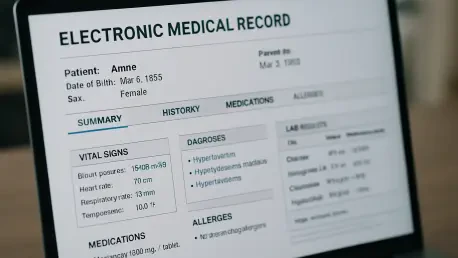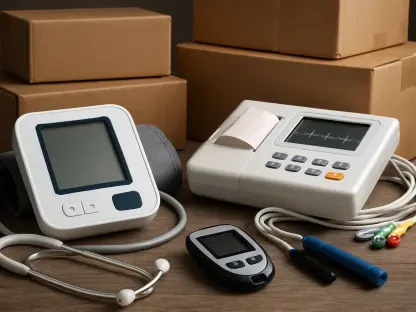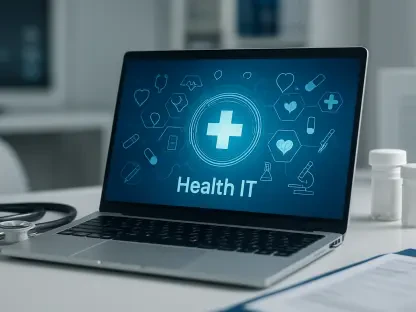The physical therapy landscape is undergoing a remarkable transformation thanks to advancements in Electronic Medical Record (EMR) software. This technological innovation is redefining how physiotherapists manage patient care, streamline documentation, and enhance operational efficiency. With the increasing demand for improved healthcare services, physiotherapists are turning to EMR systems to offer a more integrated and personalized approach to patient care. As the healthcare sector continues to evolve, the adoption of EMR software in physical therapy has become a game changer, providing robust solutions to age-old challenges and revolutionizing the entire practice.
Enhancing Documentation and Streamlining Processes
Replacing Traditional Records with Digital Solutions
The transition from traditional paper-based records to digital documentation marks a significant shift in how physical therapists manage patient information. Traditional records not only contribute to inefficiencies and inaccuracies, but they also require substantial time and effort in terms of organization and retrieval. EMR software addresses these challenges by offering instant access to patient records, ensuring they are complete, precise, and readily available. This transition is characterized by the use of customizable templates that facilitate the quick documentation process by minimizing manual entries. The customizable nature of EMR templates enables therapists to adapt them to their specific needs, ensuring that documentation is not only quick but also reliable.
This technological enhancement allows practitioners to allocate more time to patient care rather than focusing on administrative tasks. Furthermore, with digital solutions, the reduction in errors is noticeable, as automated checks and balances ensure that all entries meet the necessary standards. The immediacy with which records can be accessed further means that therapists can make data-driven decisions promptly. This swift access to information aids in fostering a more synchronized approach to patient management, ultimately leading to improved outcomes and higher satisfaction rates among patients.
Improving Workflow and Patient Management Efficiency
Physical Therapy EMR solutions provide a consolidated platform where information is stored in a single repository, eliminating the need for multiple systems. By consolidating patient histories, progress notes, and treatment plans into one accessible location, EMR helps in creating smoother workflows and increasing the efficiency of patient management. Through the software, therapists can coordinate better, ensuring they cater to each patient’s unique needs effectively. Additionally, EMR facilitates the creation of a comprehensive patient profile by compiling all essential data, including past interventions and current progress, thus offering a holistic view of each case.
Another crucial feature that enhances clinic workflows is the EMR’s scheduling capabilities. The ability to schedule appointments seamlessly and send automated reminders to patients significantly reduces no-show rates and boosts clinic productivity. Appointments, reminders, and follow-up checks are managed effortlessly, ensuring that patients remain engaged, and their adherence to therapy plans increases. The use of automated systems for scheduling ensures a reduced administrative burden, allowing clinics to focus on providing excellent patient care and improving operational efficiencies.
Addressing Data Security and Compliance Needs
Protecting Patient Data Securely
In an era where data security is paramount, physical therapy EMR software rises to the challenge by incorporating advanced protection measures. Ensuring the security of patient information is non-negotiable, and EMR systems approach this with features such as encryption, user authentication, and stringent access controls. These protective measures guard against unauthorized access and potential breaches. Coupled with regular software updates and meticulous audits, data security becomes a forefront focus. Such rigorous security protocols not only protect sensitive information but also build trust between healthcare providers and their patients.
Compliance with healthcare regulations is another critical aspect where EMR systems excel. By integrating compliance features like adherence to the Health Insurance Portability and Accountability Act (HIPAA), EMR software ensures that patient information management aligns with industry regulations. This compliance aids clinics in maintaining their reputations while providing peace of mind to patients regarding their data security. The integration of compliance standards also assists practitioners in navigating complex regulatory landscapes with ease, thereby focusing their efforts on clinical outcomes rather than administrative hurdles.
Enhancing Integration and Interoperability
Seamless integration capabilities mark the effectiveness of a robust EMR system. The ability to integrate seamlessly with other healthcare solutions like billing, practice management, and diagnostic systems amplifies operational efficiency. Such integration reduces redundant data entry and creates a unified approach to patient care, allowing every aspect of a patient’s treatment to be interconnected. Importantly, the EMR’s interoperability extends to telehealth platforms, making remote consultations feasible. Telehealth integration ensures continuous care and flexibility for patients, proving invaluable in modern healthcare scenarios where accessibility and convenience are critical.
The advantage of this interoperability is not limited to patient experiences alone. For practitioners, it streamlines operations by providing a cohesive operating environment, reducing the likelihood of errors between systems. Integration aids staff by automating processes—such as insurance claim submissions and patient billing—allowing them to allocate more focus on clinical duties and patient interaction. This degree of automation and interoperability ensures that healthcare providers can sustain high-quality standards irrespective of operational challenges.
Personalizing Care and Treatment Plans
Tailoring Interventions to Meet Individual Needs
One of the standout features of Physical Therapy EMR software is its ability to personalize treatment regimens. Recognizing that each patient presents unique challenges, EMR systems empower therapists to craft treatment plans that align with individual needs. This level of personalization enhances patient engagement, compliance, and overall satisfaction. By tracking patient progress accurately and updating treatment strategies as needed, therapists can ensure continuity in achieving desired outcomes. A patient-centric approach becomes easier to maintain when each therapeutic action is tailored specifically to the patient’s evolving conditions.
The ability to modify treatment plans swiftly as per real-time data adds considerable value to physical therapy practices. This dynamic approach to care empowers therapists with insights that were once daunting to compile manually, allowing for agile adjustments that directly influence patient improvement. Furthermore, the provision of visual progress tracking engages patients, offering them a transparent view of their recovery journey, thus motivating them to adhere to prescribed regimes faithfully. This collaborative approach serves to bridge the gap between practitioners and their patients, fostering a relationship built on trust and shared goals.
Leveraging Comprehensive Reporting for Better Outcomes
Beyond personalization, EMR systems offer comprehensive reporting tools that bring clarity to clinic operations and patient outcomes. By tapping into these analytics features, clinics can delve into patient data and demographic trends, treatment effectiveness, and overall clinic performance. Robust reporting not only allows for retrospective analyses but also aids in forecasting future trends and demands. Decision-makers use this data-driven approach to refine strategies, allocate resources more effectively, and identify areas for improvement within practice operations.
Armed with insights gleaned from these reports, physical therapists can make informed decisions that enhance quality of care while optimizing business practices. The availability of such granular data offers a mechanism to monitor and benchmark practice and patient outcomes, ensuring that all strategies employed are in line with achieving top-tier therapeutic results. Clinics utilize this depth of information to build upon their success, adapting practices as required and perpetuating a cycle of continuous improvement. Through frequent assessment and adjustment, EMR software plays a pivotal role in supporting both strategic developments and tactical execution within physical therapy.
Conclusion: Strategic Adoption of EMR for Long-Term Success
The field of physical therapy is experiencing a significant shift due to advancements in Electronic Medical Record (EMR) software. This cutting-edge technology is changing the way physiotherapists handle patient care, simplifying documentation, and improving operational efficiency. With the ongoing push for better healthcare services, more physiotherapists are implementing EMR systems. These systems allow for a more integrated and personalized patient care approach. As the healthcare domain evolves with modern demands, the integration of EMR software in physical therapy practices has emerged as a pivotal development. It provides powerful solutions to longstanding challenges while revolutionizing the entire approach to physiotherapy. EMR systems not only facilitate real-time access to patient data but also ensure better coordination among healthcare professionals. The adoption of this technology marks a step towards more efficient, precise, and patient-centered care, thereby transforming the face of physical therapy and setting new benchmarks for the future.









